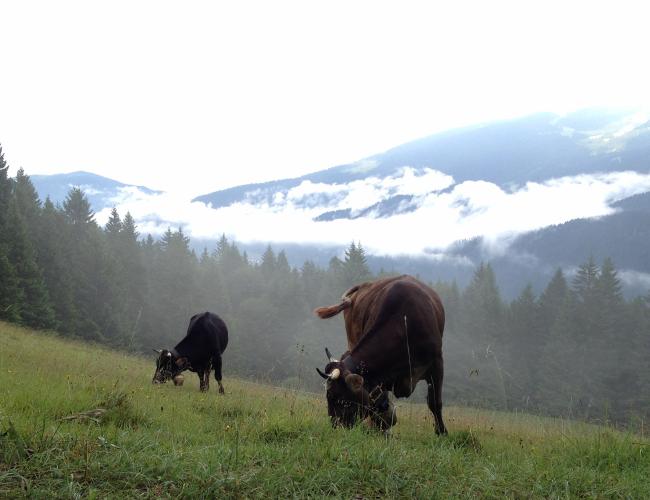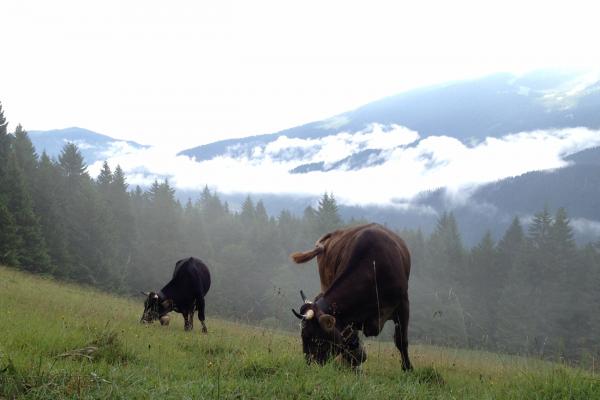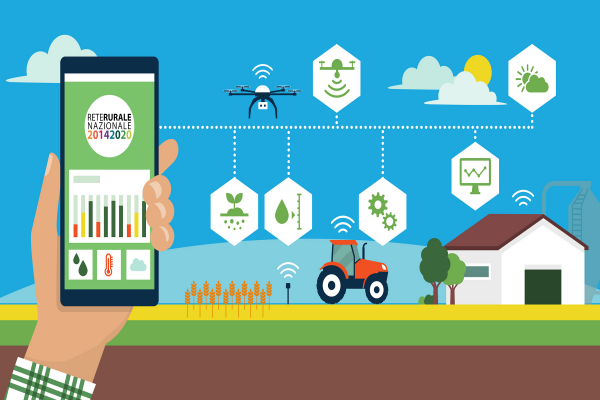Agroecological innovations to increase the resilience and sustainability of mountain livestock farms

i) Protection of biodiversity, both vegetal and animal, of both domestic and wild varieties, as well as a better knowledge and use of functional biodiversity (the one supporting agro-zootechnical production), following the introduction of agroecological innovations; ii) Increase of the margins of company profitability: the objective that we set ourselves is the reduction of the cost item linked to the feeding of the animals, through the organization of an efficient Foraging System; iii) Product quality improvement. Grazing breeding improves the organoleptic qualities of both dairy products and beef meat products.
AZ 1 - Participatory action research: Co-definition of priorities and ongoing Co-evaluation of activities and potential innovations; AZ 2-Agroecological experimentation in the zootechnical and horticultural sector and in territorial marketing; AZ 3 - Sustainability: estimation and monitoring of the environmental footprint of companies. Self-diagnosis: co-creation and testing of an IT decision support system for monitoring the global sustainability of companies; AZ 4 - Experiential agroecological training in the zootechnical, horticultural and management sectors; AZ 5 - Disclosure: online, paper, face to face; AZ 6 - Coordination.
In the Giudicarie territory the bovine breeding is the pre-eminent agricultural activity, spread in all areas of the Community, both for the production of milk and meat. In the Giudicarie Esteriori, the breeding is exclusively in stable, where the livestock is hospitalized for the whole year, and the high altitude pastures are rarely used. The company size, disproportionate to the agricultural area of the company, involves a type of industrial activity that is not competitive with similar companies in the Po Valley, and causes environmental pollution and heavy consumption of diesel and water.
Change of food ration in dairy cows: from unifeed to a diet based mainly on fodder resources.
Improvement of the nutritional quality of the ration: we promote the production and use of good quality fodder, rich in digestible fiber and proteins, which determine optimal digestive functioning, lower incidence of diseases, lower business investments for the purchase of feed, high welfare of the animals they can express fundamental behaviors for the species etogram, and greater healthiness of products such as milk and meat.
Rotating dynamic pasture: The Rotating Dynamic pasture consists in dividing the plots dedicated to pasture into sectors and moving the animals from one sector to another so that the nutritional value of the grass is optimal in virtue of the vegetative stage. This practice allows an efficient use of the grazing resource as the animals remain in each sector only for the time necessary for the consumption of the grass, avoiding to degrade both the soil and the turf through the trampling and mechanical stress due to attempts to grasp of the rind when the part of the plant left on the ground is too low. It allows you to use the grassy rinds several times over the same season, since the essences after the movement of the animals have the possibility of regrowth. The soil, during periods of rest, absorbs the nutrients contained in the dejections, and recovers air in the superficial layers.
INVERSION provides technical assistance to elaborate the Grazing Plan together with the breeders: it decides the extension of the sectors, calculated on the basis of the animal load and the evaluation of the estimated quantity and quality of green biomass, and the length of stay of the animals in each sector. It is important to identify the load of cattle correctly, in fact a limited load causes an excessive selection of less appetite plants and an excessive growth of the grass with reduction of its nutritional power, while a high animal load causes damage due to excessive rips and trampling.
Integrated animal health: INVERSION aims to reduce the use of fragmented molecules through a systemic approach to animal health and the use of practices such as homeopathy and phytotherapy that reinforce adaptive reactions and have no environmental impact.
The proposed systemic and integrated health approach includes the evaluation of the entire agrozootechnical company, monitoring actions, and corrective actions as much as possible estimates.
The practice of living-mulch for the reduction of the use of chemical fertilizers and the control of weeds in the cultivation of corn: The practice of living-mulch (in Italian: "living mulch") is carried out sowing simultaneously with the culture main (maize) a "companion" culture.
The species to be associated with the main crop is chosen based on the characteristics of its functionality. According to his needs, the farmer will be able to opt for a fast-growing creeping species if his goal is to limit the growth of weeds without the use of herbicides. Or you can choose leguminous species * if you want to bring nitrogen to the soil and avoid the application of chemical fertilizers.
By exploiting functional biodiversity, mixtures of species can be used together, each of which has useful characteristics, in order to obtain as many benefits as possible (services to the agroecosystem).
At the CARGOS company, 3 different types of management will be compared:
- current business practices: application of chemical fertilizers and herbicides ("CONT");
- reduction of synthetic fertilizers ("REDUX");
- agroecological approach: the chemical inputs will be replaced by the practice of living-mulch with a mix of legume crops ("AGROECO").
In this way it will be possible to measure and compare the productive and economic performances of the different types of management. It is expected that, thanks to the functionality of the living-mulch, the production of corn will remain constant, without the use of synthetic inputs and with a clear benefit for the environment and the territory.
| Titolo/Descrizione | Url | Tipologia |
|---|---|---|
|
Sito web del progetto
|
Sito web
|
|
|
report di fine progetto
|
Materiali utili
|
|
|
etichette narranti
|
Materiali utili
|


